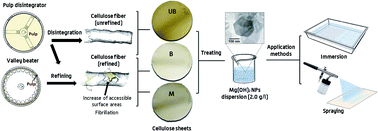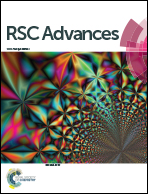Application of magnesium hydroxide nanocoatings on cellulose fibers with different refining degrees
Abstract
Paper aging and protection are of crucial interest for improving the preservations of library collections and archives. Highly aging-resistant cellulose fiber sheets were obtained by treatment with magnesium hydroxide nanoparticles (Mg(OH)2). The procedure was tested on the sheets made of bleached (B) and refined unbleached (UB) pine cellulose fibers as well as their 50%/50% mixture (M). The mor and structural properties of the obtained sheets were studied by X-ray diffraction (XRD) and Scanning Electron Microscopy (SEM) methods. Stress–strain, smoothness and pH measurements were employed to determine the changes in physical-chemical characteristics of the sheets after mixing two types of the fibers and subsequent treatment with Mg(OH)2. It has been shown that the sheets made of the fiber mixture show a higher tensile index and smoothness. The modification with Mg(OH)2 nanoparticles induces an increase in the pH of the sheets to slightly basic values (around pH 8), facilitates the inter-fiber bonding and additionally enhances the smoothness of the sheets. Finally, by exposing the sheets to thermo-hygrometric accelerated artificial ageing, it was found that the physical properties of the treated sheets were not significantly dependent on the environmental factors.


 Please wait while we load your content...
Please wait while we load your content...